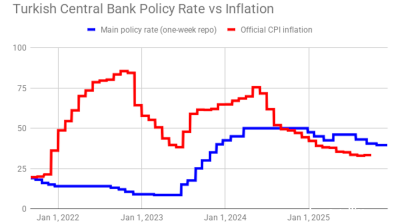The volume of bank loans in Moldova, defined as net banking system claims, increased by 13.6% y/y to MDL51.0bn (€2.37bn) at the end of April.
Dollarisation has diminished over the past five years, as the lending to households (predominantly in local currency) gained momentum, while corporate lending lags behind. The pattern illustrates the banking system’s advance in terms of reforms (regulatory supervision, ownership) compared to the real sector that needs massive reforms particularly in terms of privatisation. Major banks having transparent ownership after the 2015 crisis resulted in more adequate strategies, while the potential of the private real sector remains limited.
Out of total loans, 65% were expressed in local currency, up from 56% five years earlier.
The share of loans to households (banks’ claims against residential segment, more precisely) accounted in April 2021 for 37.5% of the total loans — more than twice as much as five years earlier (17.3%). Corporate lending remains dominant, yet it is gradually losing ground.
Even amid active lending over the past 12 months, households increased their exposure to banks faster than the private corporate sector. Overall, the stock of local currency loans rose by 17.2% y/y (to €1.54bn), which is an annual advance significantly above past five year’s annual average rise of 7.2%.
Thus, over the past 12 months as of April this year, the stock of loans expressed in local currency against private companies increased by15.3% y/y to MDL13.4bn (€622mn) while the local currency loans to households surged by 21.8% y/y to MDL 18.6% (€862mn).
When it comes to foreign currency lending, however, the corporate segment dominates: it accounts for 92% of such loans, which are typically not extended to households. Forex lending to private sector expanded by 8.2% y/y (in local currency). But, notably, over the past five years, the stock of such loans has contracted on average by 0.3% per annum.
Data

Turkey's central bank remains cautious, delivers 100bp rate cut
Decision comes on eve of next hearing in trial that could dislodge leadership of opposition CHP party.

Polish retail sales return to solid growth in September
Polish retail sales grew 6.4% year on year in constant prices in September, picking up from a 3.1% y/y rise in August, the statistics office GUS said.

Uzbekistan’s nine-month foreign trade nears $60bn
Export growth of 33% and import expansion of 16% y/y produce $6.4bn deficit.

Hungary’s central bank leaves rates unchanged
National Bank of Hungary expects inflation to fall back into the tolerance band by early 2026, with the 3% target sustainably achievable in early 2027 under the current strict policy settings.



